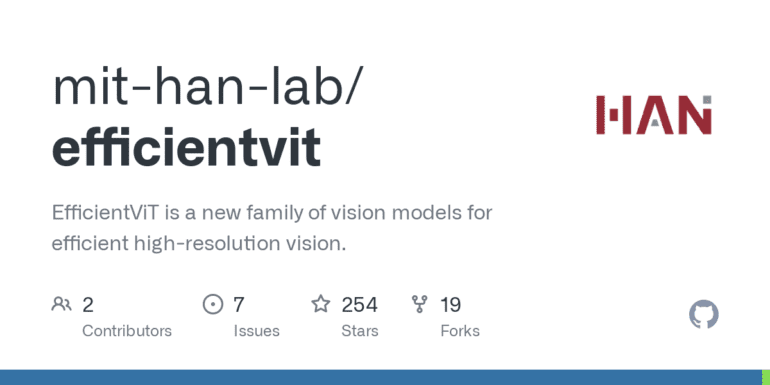TL;DR:
- MIT introduces EfficientViT, a groundbreaking solution for on-device semantic segmentation.
- Semantic segmentation is crucial for applications like autonomous driving and medical image analysis.
- Traditional SOTA models are too computationally demanding for edge devices.
- EfficientViT employs a novel lightweight multi-scale attention module.
- It replaces the nonlinear similarity function with a linear one, reducing computational complexity.
- The approach scales linearly with input image pixel count and outperforms prior models.
- This innovation has significant implications for edge device applications.
Main AI News:
In the realm of computer vision, semantic segmentation stands as a pivotal challenge, one that seeks to assign a specific class to every pixel within an input image. This technology finds applications in autonomous driving, medical image analysis, and computational photography, among others. The demand for deploying state-of-the-art (SOTA) semantic segmentation models on edge devices is burgeoning, yet it has encountered a substantial roadblock.
These cutting-edge models demand computational prowess that most edge devices are ill-equipped to provide, rendering them impractical for on-device usage. Semantic segmentation, in particular, presents a dense prediction task that hinges on high-resolution imagery and the extraction of comprehensive contextual information. Hence, transplanting the successful model architectures from image classification to semantic segmentation proves an ineffectual approach.
Classifying myriad individual pixels within a high-resolution image imposes a monumental challenge on machine learning models. Enter the vision transformer, an innovative model that has recently emerged as a game-changer in this field.
Initially designed to enhance the efficiency of natural language processing (NLP), transformers tokenize words in sentences and establish intricate connectivity patterns through attention maps. These attention maps bolster the model’s contextual comprehension, elevating its capabilities.
In the case of vision transformers, the same concept applies. They segment images into pixel patches, converting each patch into a token. A similarity function facilitates the model in deciphering direct interactions among pixel pairs, thereby forming an attention map. This unique approach furnishes the model with a “global receptive field,” enabling it to assimilate all critical image details.
However, the attention map’s dimensions burgeon exponentially as high-resolution images get dissected into thousands of patches, magnifying the computational demands exponentially as well.
Enter MIT’s groundbreaking innovation – EfficientViT. The MIT team has ingeniously substituted the nonlinear similarity function with a linear counterpart, streamlining the attention map construction process. This optimization allows for a reordering of operations, significantly curtailing computational overhead while preserving functionality and the global receptive field. Thanks to this ingenious approach, the processing time scales linearly with the pixel count of the input image.
EfficientViT introduces a family of models that perform semantic segmentation locally on the device. At its core lies a novel lightweight multi-scale attention module, meticulously designed for hardware efficiency and global receptive field establishment. The inspiration for this component is drawn from the annals of SOTA semantic segmentation methodologies.
This module has been crafted to grant access to essential functionalities while minimizing the reliance on inefficient hardware operations. A key proposition entails replacing the cumbersome self-attention mechanism with a nimble ReLU-based global attention system, delivering a global receptive field. By capitalizing on the associative property of matrix multiplication, this approach efficiently reduces the computational complexity from quadratic to linear. Moreover, its avoidance of hardware-intensive algorithms like softmax renders it tailor-made for on-device semantic segmentation.
EfficientViT has undergone rigorous evaluations using benchmark datasets such as Cityscapes and ADE20K for semantic segmentation. In these assessments, it has demonstrated substantial performance improvements compared to prior SOTA models, solidifying its status as a pioneering solution in the field.
Conclusion:
MIT’s EfficientViT marks a significant advancement in on-device semantic segmentation, addressing the computational limitations of edge devices. This breakthrough technology opens up new possibilities for applications such as autonomous driving and medical imaging, enhancing their accessibility and performance in real-world scenarios. This innovation is poised to revolutionize the market for edge device solutions, making advanced computer vision capabilities more attainable and practical across various industries.

